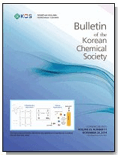
BULLETIN OF THE KOREAN CHEMICAL SOCIETY
Scope & Guideline
Fostering excellence in diverse chemical research.
Introduction
Aims and Scopes
- Synthesis and Characterization of Chemical Compounds:
The journal consistently publishes research on the synthesis of various chemical compounds, including organic molecules, organometallic complexes, and inorganic materials, along with their detailed characterization using advanced techniques such as NMR, EPR, and mass spectrometry. - Catalysis and Reaction Mechanisms:
A significant area of focus involves studying catalytic processes, including the development of novel catalysts and understanding their mechanisms. This includes both homogeneous and heterogeneous catalysis, often exploring new materials for enhanced catalytic activity. - Materials Science and Engineering:
The journal covers advancements in materials science, particularly in the development of nanomaterials, metal-organic frameworks (MOFs), and polymers, highlighting their applications in energy storage, catalysis, and sensing. - Computational Chemistry:
Computational studies complement experimental work by providing insights into molecular interactions, reaction mechanisms, and material properties, utilizing techniques such as density functional theory (DFT) and molecular dynamics simulations. - Environmental and Green Chemistry:
Research addressing environmental issues, including the development of sustainable processes, waste reduction, and the use of green solvents, is also prominent, reflecting a commitment to addressing global challenges through chemistry.
Trending and Emerging
- Sustainable and Green Chemistry:
There is a notable increase in research focusing on sustainable chemistry practices, including the development of green solvents, recyclable catalysts, and environmentally friendly synthetic methods. - Nanotechnology and Nanomaterials:
Research involving nanotechnology, particularly the synthesis and application of nanomaterials for catalysis, drug delivery, and sensing, is on the rise, reflecting the growing interest in materials at the nanoscale. - Machine Learning and Data-Driven Approaches:
Emerging themes include the application of machine learning and artificial intelligence in chemistry, particularly for predicting molecular properties, reaction outcomes, and optimizing synthetic pathways. - Biochemical Applications and Medicinal Chemistry:
There is an expanding focus on biochemical applications, including the design of novel pharmaceuticals and the exploration of biomolecular interactions, with an emphasis on drug discovery and therapeutic agents. - Interdisciplinary Research:
The journal is increasingly publishing interdisciplinary research that combines chemistry with fields such as biology, materials science, and environmental science, reflecting the collaborative nature of modern scientific inquiry.
Declining or Waning
- Traditional Organic Synthesis:
There appears to be a waning focus on traditional organic synthesis methods, as researchers increasingly explore more innovative and efficient synthetic pathways, including photoredox and organocatalytic methods. - Inorganic Chemistry without Applications:
Research papers in pure inorganic chemistry, particularly those that do not address practical applications or interdisciplinary connections, have become less frequent, reflecting a shift towards applied research. - Basic Theoretical Studies without Experimental Validation:
The journal has seen a decline in purely theoretical studies that lack experimental validation, as there is a growing expectation for research to bridge theory and practical applications. - Conventional Analytical Methods:
There seems to be a decrease in the publication of studies that focus solely on conventional analytical methods, with more emphasis being placed on innovative techniques, such as those involving nanomaterials or advanced spectroscopic methods.
Similar Journals

JOURNAL OF THE CHEMICAL SOCIETY OF PAKISTAN
Exploring Innovations in Chemical Research.JOURNAL OF THE CHEMICAL SOCIETY OF PAKISTAN is a premier academic journal published by the Chemical Society of Pakistan, focusing on advancing the field of chemistry through rigorous research and scholarship. Established in 1996, this journal aims to disseminate high-quality research articles, reviews, and insights pertaining to various subfields of chemistry, making substantial contributions to both local and international scientific communities. With a current impact factor placing it in the Q4 category, the journal continues to foster discussions on emerging trends and innovations within the discipline. Additionally, it holds a Scopus rank of #305 out of 408, highlighting its growing influence despite being positioned in the 25th percentile. Although it is not an open-access journal, it provides a crucial platform for researchers and professionals in Pakistan and worldwide. The JOURNAL OF THE CHEMICAL SOCIETY OF PAKISTAN serves as a valuable resource for students, educators, and industry professionals alike, facilitating the exchange of knowledge and promoting advancements in chemical sciences.
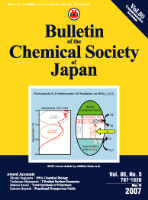
BULLETIN OF THE CHEMICAL SOCIETY OF JAPAN
Fostering Excellence: Where Chemistry Meets KnowledgeBULLETIN OF THE CHEMICAL SOCIETY OF JAPAN, published by the esteemed Chemical Society of Japan, serves as a pivotal platform for the dissemination of cutting-edge research in the multifaceted field of chemistry. With an ISSN of 0009-2673 and an E-ISSN of 1348-0634, this journal has been integral in fostering the growth of chemical sciences globally since its inception in 1965. The journal holds an impressive Q2 ranking in the Chemistry (miscellaneous) category, indicating its relevance and influence within the academic community, as reflected by its Scopus rank of #104/408, placing it in the 74th percentile. Although it is not an open-access journal, its rich content, which spans a wide range of topics in general chemistry, remains highly valued by researchers, professionals, and students alike, affirming its crucial role in advancing both theoretical knowledge and practical applications in chemistry. As it converges towards 2024, the bulletin continues to uphold its commitment to excellence in scientific communication and research dissemination in Japan and beyond.
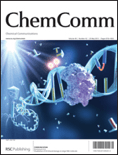
CHEMICAL COMMUNICATIONS
Exploring the chemistry of tomorrow, today.Chemical Communications, published by the esteemed Royal Society of Chemistry, is a prominent journal within the field of chemical science, focusing on the dissemination of cutting-edge research in a variety of sub-disciplines including catalysis, materials chemistry, and electronic materials. Operating without an open access model, this journal provides critical insights from contributors around the globe, enhancing our understanding of complex chemical interactions and innovative applications. Ranked in the top quartile for several categories such as Ceramics and Composites, and Metals and Alloys, Chemical Communications boasts impressive Scopus rankings, securing strong positions across multiple fields and showcasing its influence within the scientific community. The journal is committed to advancing knowledge and fostering collaboration among researchers, professionals, and students, making it an invaluable resource for those looking to stay abreast of the latest advancements in chemistry and materials science. With a publication history dating back to 1965 and continuing into 2024, its rich archive serves as a vital repository of chemical research and development.
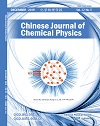
CHINESE JOURNAL OF CHEMICAL PHYSICS
Unveiling Breakthroughs in Chemical Physics ResearchChinese Journal of Chemical Physics, published by the Chinese Physical Society, serves as a pivotal platform for advancing the field of chemical physics, encompassing groundbreaking research and innovative methodologies since its inception in 2000. With an ISSN of 1674-0068 and E-ISSN of 2327-2244, the journal has established itself within the academic community, reflected in its 2023 classification as Q3 in Physical and Theoretical Chemistry and a Scopus rank of #142 out of 189, representing the 25th percentile in this competitive field. Although it does not currently operate as an open-access publication, its commitment to disseminating pivotal scientific research continues to attract scholars and professionals alike. The journal aims to bridge the gap between theoretical principles and practical applications in chemical physics, thereby fostering collaboration and innovation. By contributing significantly to the discourse in this dynamic domain, the Chinese Journal of Chemical Physics remains an essential resource for researchers, professionals, and students eager to stay abreast of contemporary developments.

RSC Advances
Connecting Researchers to Transformative IdeasRSC Advances, published by the Royal Society of Chemistry, is a leading open-access journal that has been a prominent platform for cutting-edge research since its inception in 2011. Recognized globally for its rigorous peer-review process, RSC Advances serves the dynamic fields of Chemical Engineering and Chemistry, holding prestigious rankings within the top quartile of academic journals in both areas. With its impact factor reflecting a growing influence, the journal currently occupies the Q1 category in Chemical Engineering and Q2 in Chemistry as of 2023. Researchers and professionals will find RSC Advances an essential resource for innovative studies and applications that advance scientific knowledge. Additionally, as an open access journal since 2017, it affords wider visibility and accessibility to groundbreaking research, fostering collaboration and engagement in the scientific community. Situated in Cambridge, UK, RSC Advances remains committed to its objective of disseminating high-quality research that catalyzes progress across various disciplines.
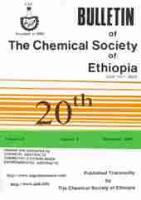
BULLETIN OF THE CHEMICAL SOCIETY OF ETHIOPIA
Exploring the Frontiers of Chemistry with Every PublicationBULLETIN OF THE CHEMICAL SOCIETY OF ETHIOPIA (ISSN: 1011-3924; E-ISSN: 1726-801X), published by the Chemical Society of Ethiopia, serves as a pivotal platform for the dissemination of innovative research and developments within the field of chemistry. Since its inception in 1996 and now an open access journal since 2012, it has provided researchers, academics, and students with unrestricted access to critical studies and findings, thus fostering collaboration and the advancement of knowledge in the discipline. The journal's current standing in the Q3 quartile in the 2023 Chemistry category underlines its commitment to maintaining high academic standards, while its Scopus ranking, positioned at #250 out of 408 in general chemistry, showcases its growing influence and contribution to the scientific community. Hailing from Ethiopia and targeted toward a global readership, the journal aims to highlight local and international research, engaging scholars and practitioners alike in discussions that propel the science of chemistry forward.

Izvestiya Vysshikh Uchebnykh Zavedenii Khimiya i Khimicheskaya Tekhnologiya
Connecting Scholars in the World of ChemistryIzvestiya Vysshikh Uchebnykh Zavedenii Khimiya i Khimicheskaya Tekhnologiya is a prominent academic journal dedicated to the fields of chemistry and chemical technology, published by the esteemed IVANOVSKOGO KHIMIKO-TEKHNOLOGI TSHESKOGO INST in the Russian Federation. With an ISSN of 0579-2991 and E-ISSN of 2500-3070, this journal has been a crucial platform since its inception in 1980, showcasing significant advancements and research findings, particularly in its converged periods from 1980, 1982, and 2017 to 2024. The journal is ranked Q3 in Chemical Engineering and Chemistry, reflecting its dedication to quality scholarship. Although open access options are currently unavailable, the journal plays a vital role in disseminating knowledge and fostering collaboration among researchers, professionals, and students in these critical scientific domains. Situated in Ivanovo, Russia, it continues to be a focal point for impactful research, making it an essential resource for those aiming to stay at the forefront of innovation in chemistry and chemical engineering.
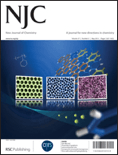
NEW JOURNAL OF CHEMISTRY
Pioneering Insights in Chemistry and CatalysisNEW JOURNAL OF CHEMISTRY, published by the prestigious Royal Society of Chemistry, serves as a vital platform for the dissemination of research in the dynamic fields of chemistry, catalysis, and materials science. With an impressive ISSN of 1144-0546, this journal boasts a rich history, having been established in 1996, and is set to continue its impactful publication through 2024. The journal is recognized in several categories, achieving a Q2 ranking in both chemistry and materials chemistry, and a Q3 rank in catalysis, reflecting its significance within these disciplines. Researchers will find it particularly noteworthy that the journal holds an esteemed position in the Scopus rankings, with a 65th percentile standing in general chemistry. Though it currently operates on a subscription model, its commitment to advancing the frontiers of chemistry makes it an essential resource for academics, professionals, and students seeking to keep abreast of the latest advancements and innovative methodologies in their fields.
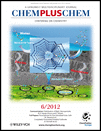
ChemPlusChem
Fostering Scientific Dialogue for a Brighter Chemical FutureChemPlusChem is a premier journal published by WILEY-V C H VERLAG GMBH, dedicated to the vibrant field of chemistry. With an ISSN of 2192-6506 and an impressive Q1 ranking in Scopus's 2023 category for miscellaneous chemistry, this journal serves as a significant platform for the dissemination of high-quality research and innovative findings. Since its inception in 2012, ChemPlusChem has fostered interdisciplinary collaborations, encapsulating a wide array of topics within chemistry that facilitate scientific advancement and education. The journal features a robust open access system, enabling extensive visibility for authors while providing easy-to-access resources for researchers, professionals, and students globally. Located in Weinheim, Germany, ChemPlusChem reflects international standards and ambitions, striving to enrich the global scientific community through rigorous research and engaging scientific discourse.
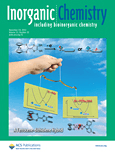
INORGANIC CHEMISTRY
Advancing the Frontiers of Inorganic ChemistryInorganic Chemistry, published by the American Chemical Society, stands at the forefront of the field of inorganic and physical chemistry, boasting an impressive impact in the academic community with a 2023 classification in the Q1 quartile across multiple categories including Inorganic Chemistry and Miscellaneous Chemistry. Since its inception in 1962, this esteemed journal has been a crucial platform for disseminating groundbreaking research, innovative methodologies, and comprehensive reviews integral to understanding the complex behaviors of inorganic materials. With a ranking of #12 out of 79 in Inorganic Chemistry and #37 out of 189 in Physical and Theoretical Chemistry according to Scopus metrics, Inorganic Chemistry has established itself as a premier destination for researchers, professionals, and students alike, eager to stay abreast of pivotal developments and trends in the discipline. Despite being a subscription-based journal, its esteemed reputation and critical contributions make it essential for anyone engaged in the exploration of inorganic chemical phenomena. As it prepares to converge into a new era by 2024, the journal continues to embody excellence and innovation, fostering a dynamic exchange of ideas essential for advancing this vibrant area of science.